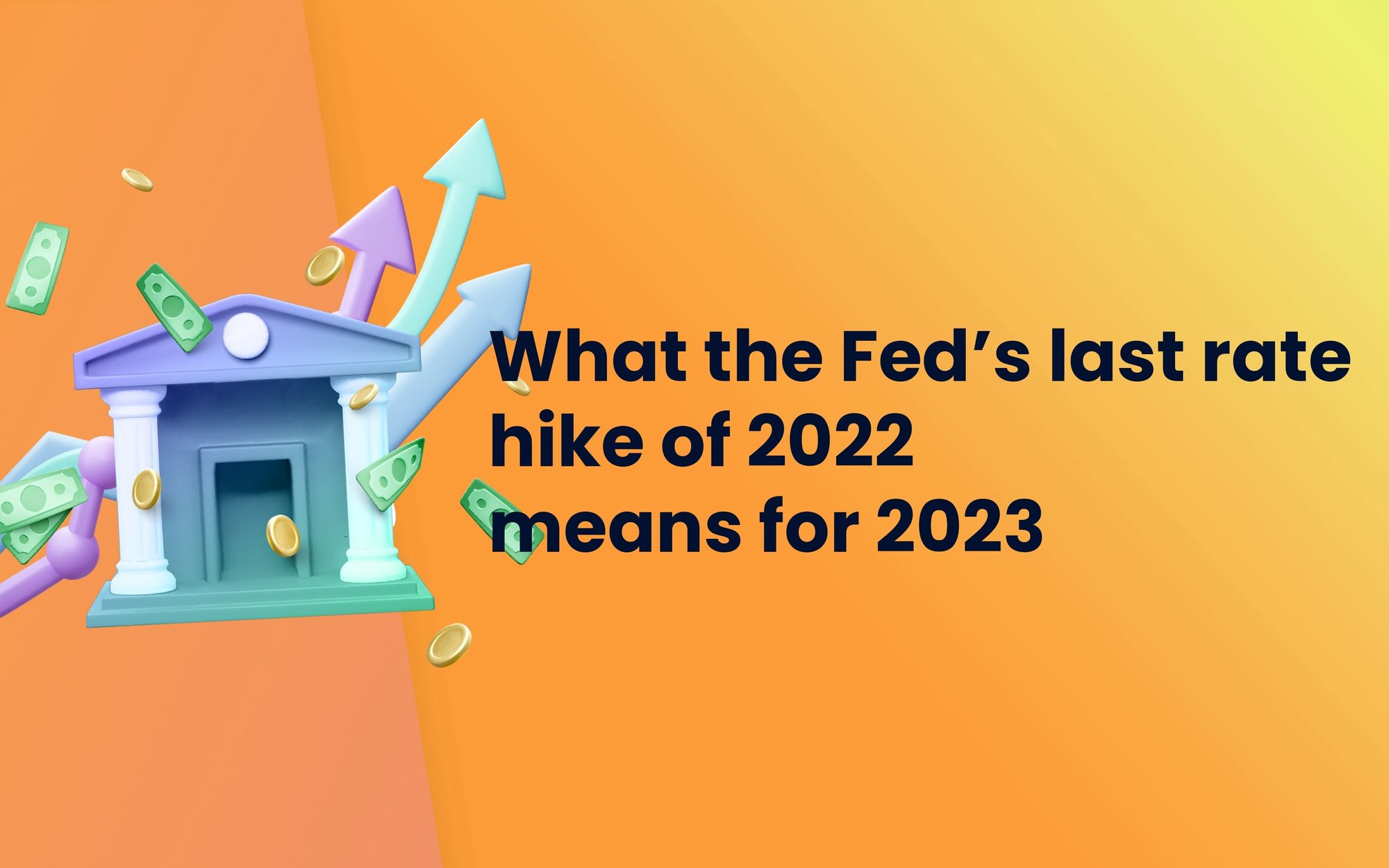What The Feds’ last rate hike of 2022 means for 2023
Explaining The Feds December 2022 Rate Hike

The Central Bank for the United States aka The Federal Reserves (The Feds) have decided to raise their benchmark interest rates by 0.5%. How does this affect you? Buckle up because you’re in for a ride.
But first, a recap.
The Feds
The Feds are what we call a central bank. All countries have one. E.g. The Monetary Authority of Singapore, the Reserve Bank of India and the European Central Bank for most of Europe.
Think of Central banks as THE BANK for commercial banks. Through central banks, commercial banks can deposit excess cash reserves, and borrow/lend each other cash at a separate interest rate inaccessible to regular people outside of the banking system.
Inflation.
Due to aggressive stimulus from governments during and post-COVID, there has been an increased amount of consumer spending. Combine that with the Russo-Ukraine conflict and a few other factors and you have a recipe for inflation in 2022.
Inflation is more-or-less a natural by-product which helps the economy to grow, but reduces the value of your money (stored in the bank) over time. No inflation at all is a bad thing (it’s called stagflation, which we’ll get into another time), but too much of it is also bad. The US is currently fighting inflation but at the expense of causing turmoil in the markets.
This year alone, inflation went up by 7% in the US! Meaning your money in the bank is worth 7% less than what it used to be last year (another reason why you should invest).
So why the hike?
In order to fight this, the Feds have been increasing interest rates. This hurts business profits and reduces the number of market investments, because investors would then sell stocks to put their money into banks which earns them higher interest, thus causing stock prices to fall (This is an over-simplified summary of what’s happening).
The Feds have hiked up their benchmark interest rate to (the interest rate at which banks and credit unions borrow from and lend to each other.) by 0.5% to a rate of 4.25% to 4.5%, the highest it’s been since 2007.
A welcome change from the previous four 0.75% increments, this increase of 0.5% comes in response to consumer price growth easing more than expected in November meaning that inflation could be decreasing but as Jay Powell, the current chair of the Federal Reserves has said, “It will take substantially more evidence than a single month’s data to be sure that inflation is declining.”
In fact, experts speculate that the hike could go even higher in 2023 with no reductions until 2024. Ouch.
How this applies to you
Since the US has the largest economy, GDP, bond and equity markets and uses the most widely used currency in trading (USD), the world tends to follow its lead when it comes to the economy.
We’ve been in the bear market for most of this year now, meaning that companies and people alike are spending less and less in order to save for a potentially rainy day that’s coming soon. You can see that from the massive layovers by Twitter, Meta, Google and other companies to save costs.
While it may be pre-emptive to liquidate your portfolio, having cash on hand can be a valuable asset during a bear market. It provides a cushion for unexpected expenses like medical bills or car repairs and with cash in your pocket you are less likely to be influenced by the fluctuations of the stock market and can avoid making impulsive choices.
Having cash available is a great way to position yourself so that you can take advantage of the situation by investing wisely and setting yourself up for long-term success.
That being said with our current bear market, you could also consider dollar-cost averaging or #HODLing your better investments, because time in the market always works out.
With the year ending and everything slowing to a grim close, we would like you to focus on your biggest investment: Yourself. Have you achieved all you set out to this year? Do you like the person you’re becoming? Are you already planning for something big next year?
Whether you’re happy with your answers or not, the reality is, 2022 has not been an easy year. We’re still here and that’s something you can be proud of. Here’s to hoping 2023 is a year of growth in both your investments and your personal life. Happy Holidays and Have a good one.